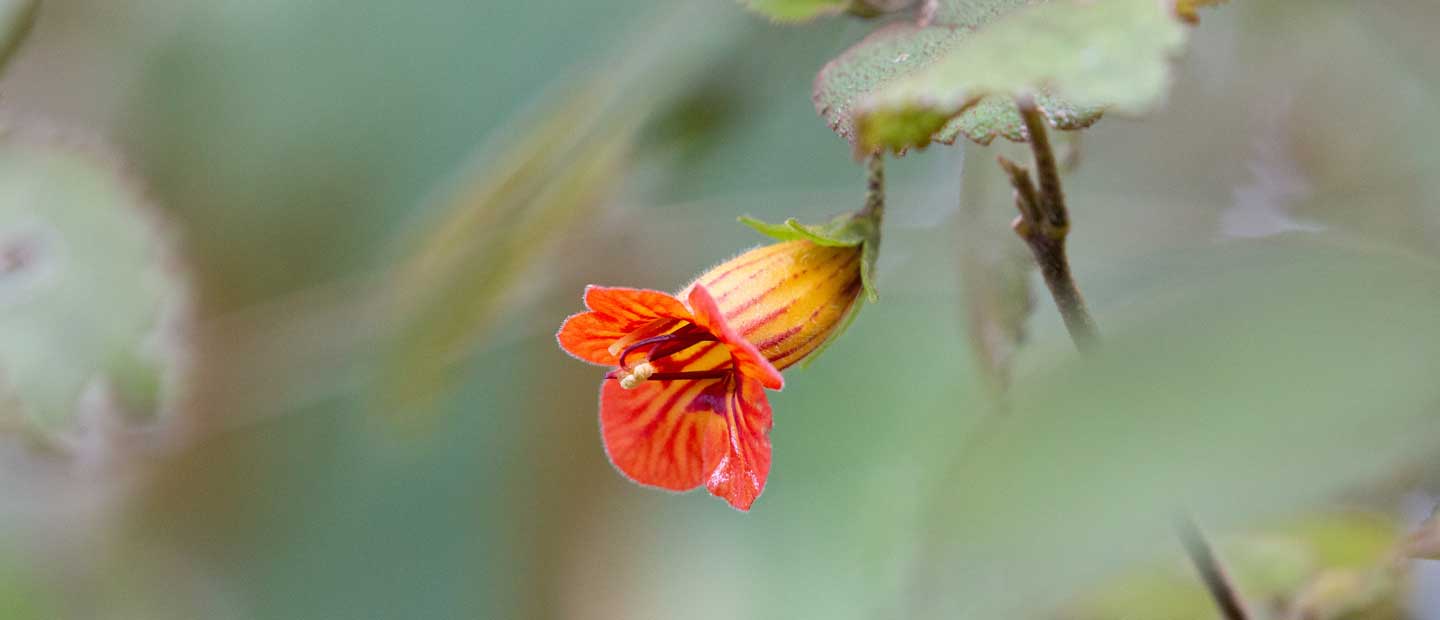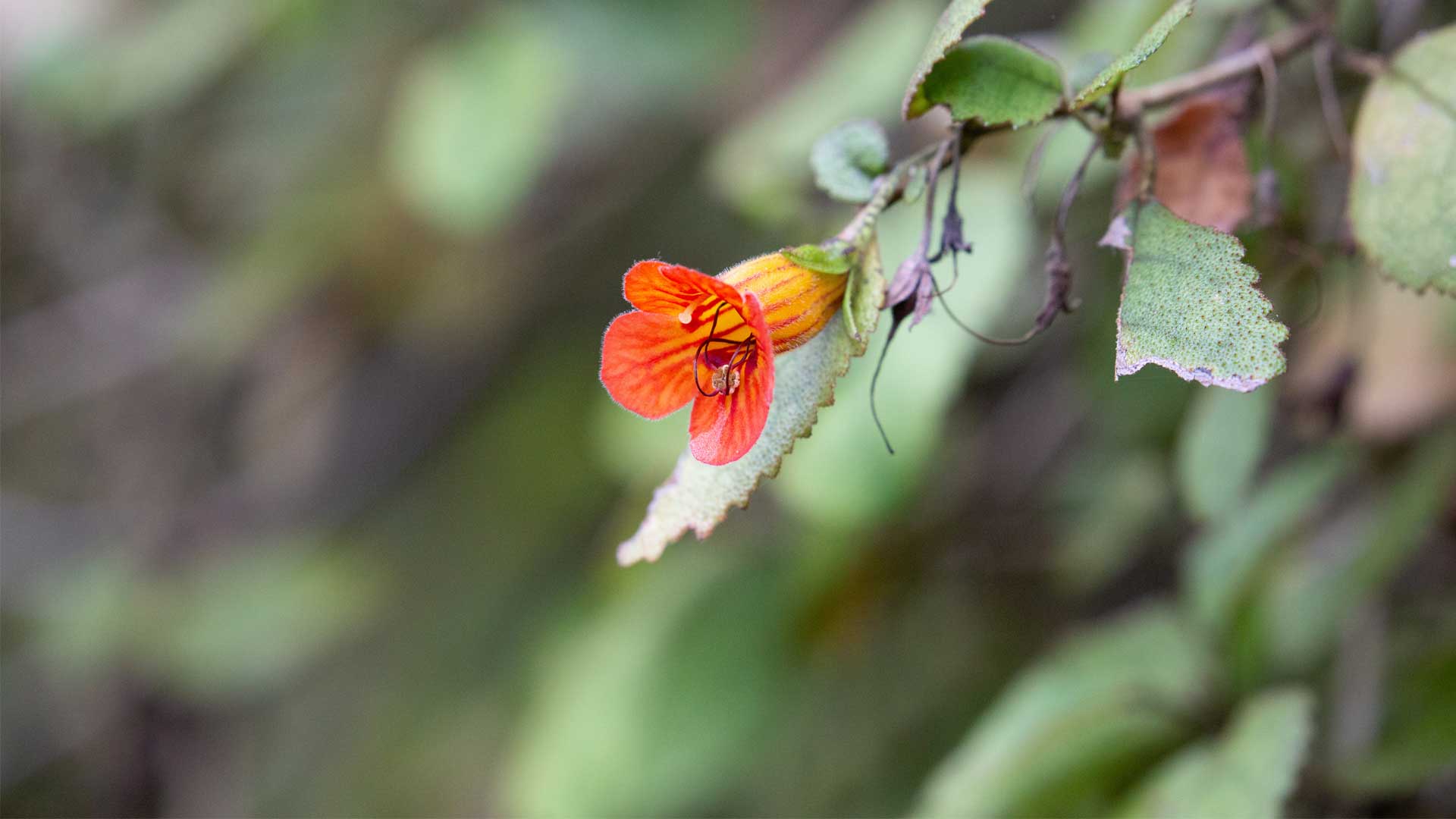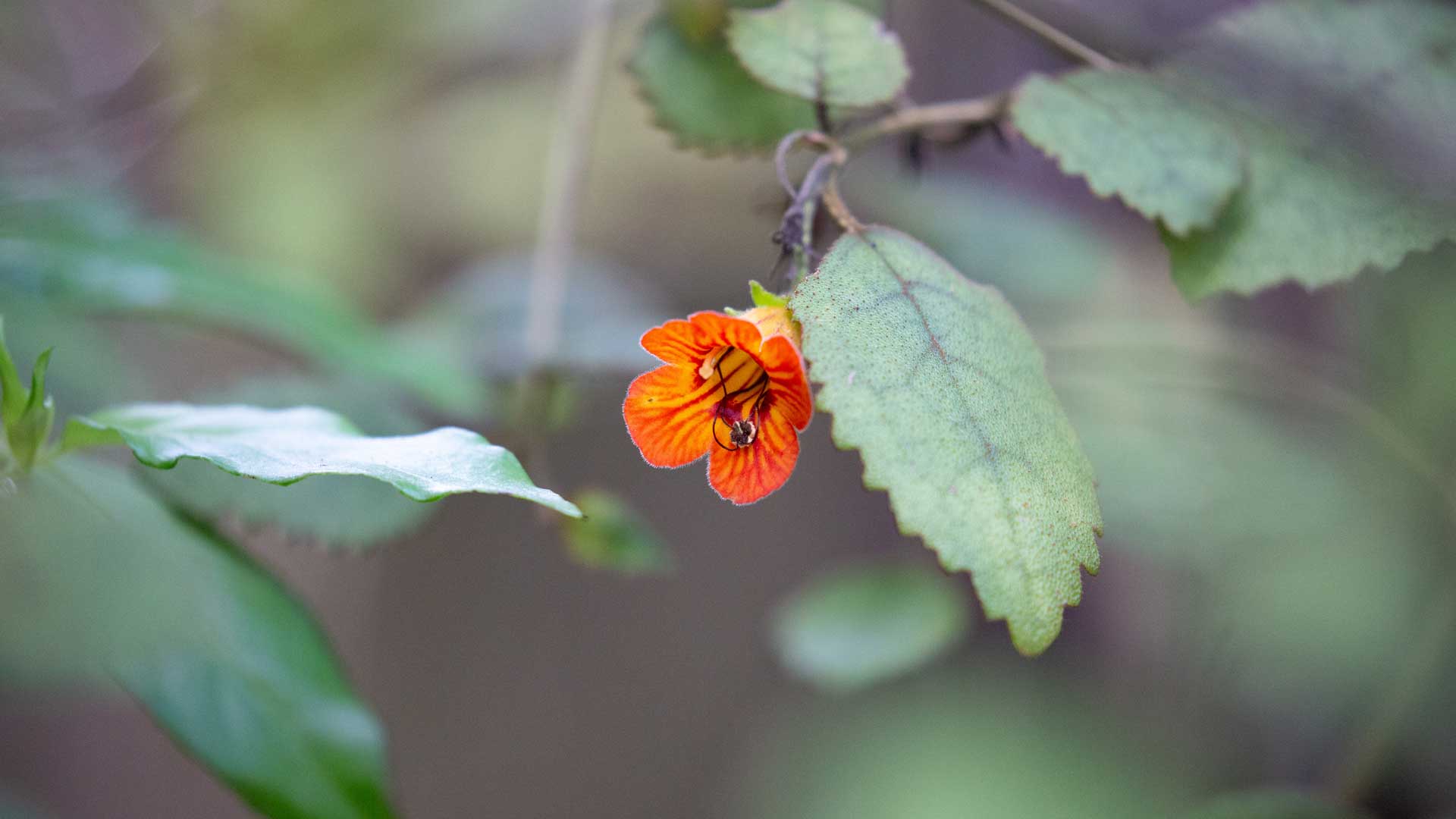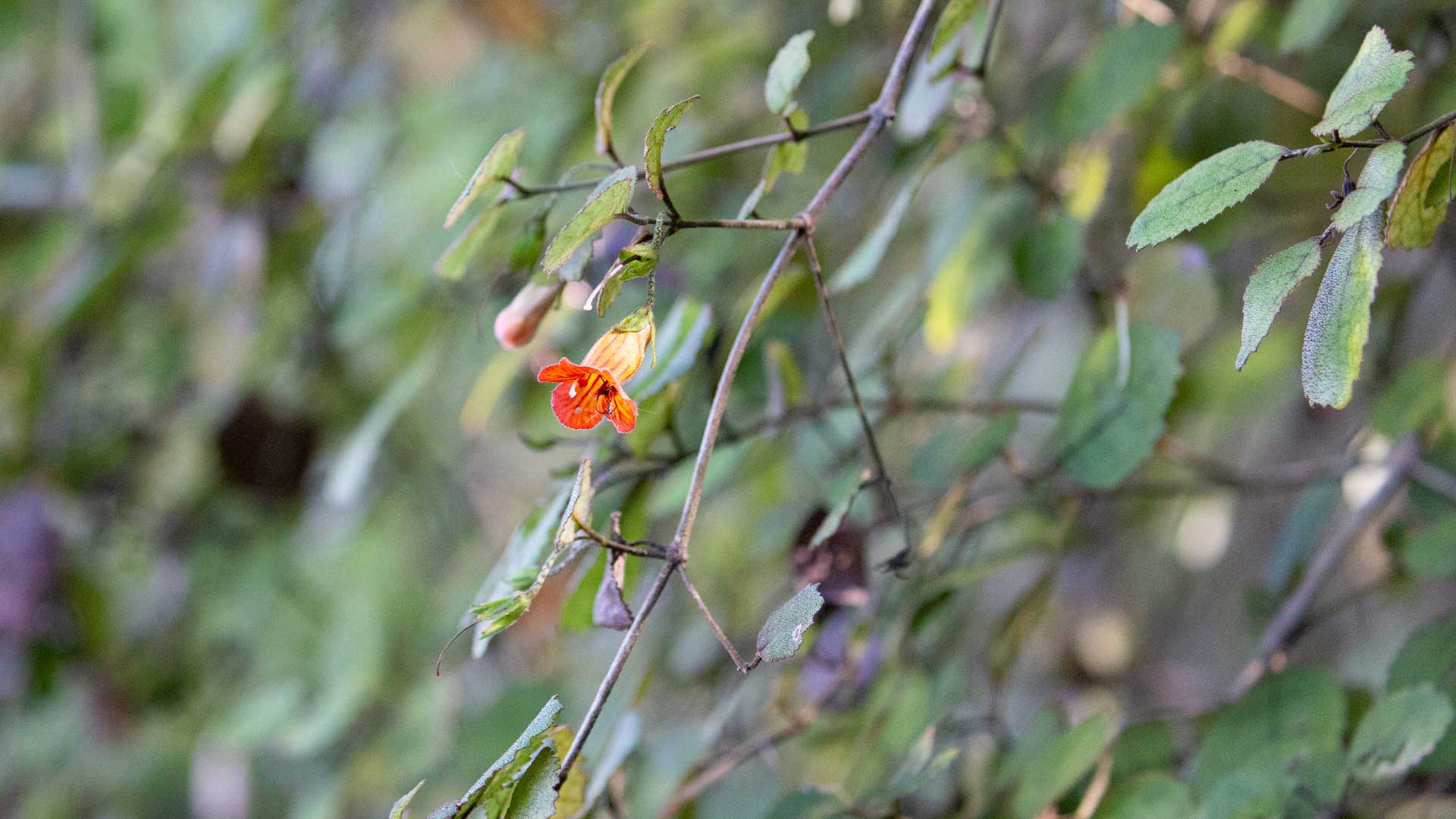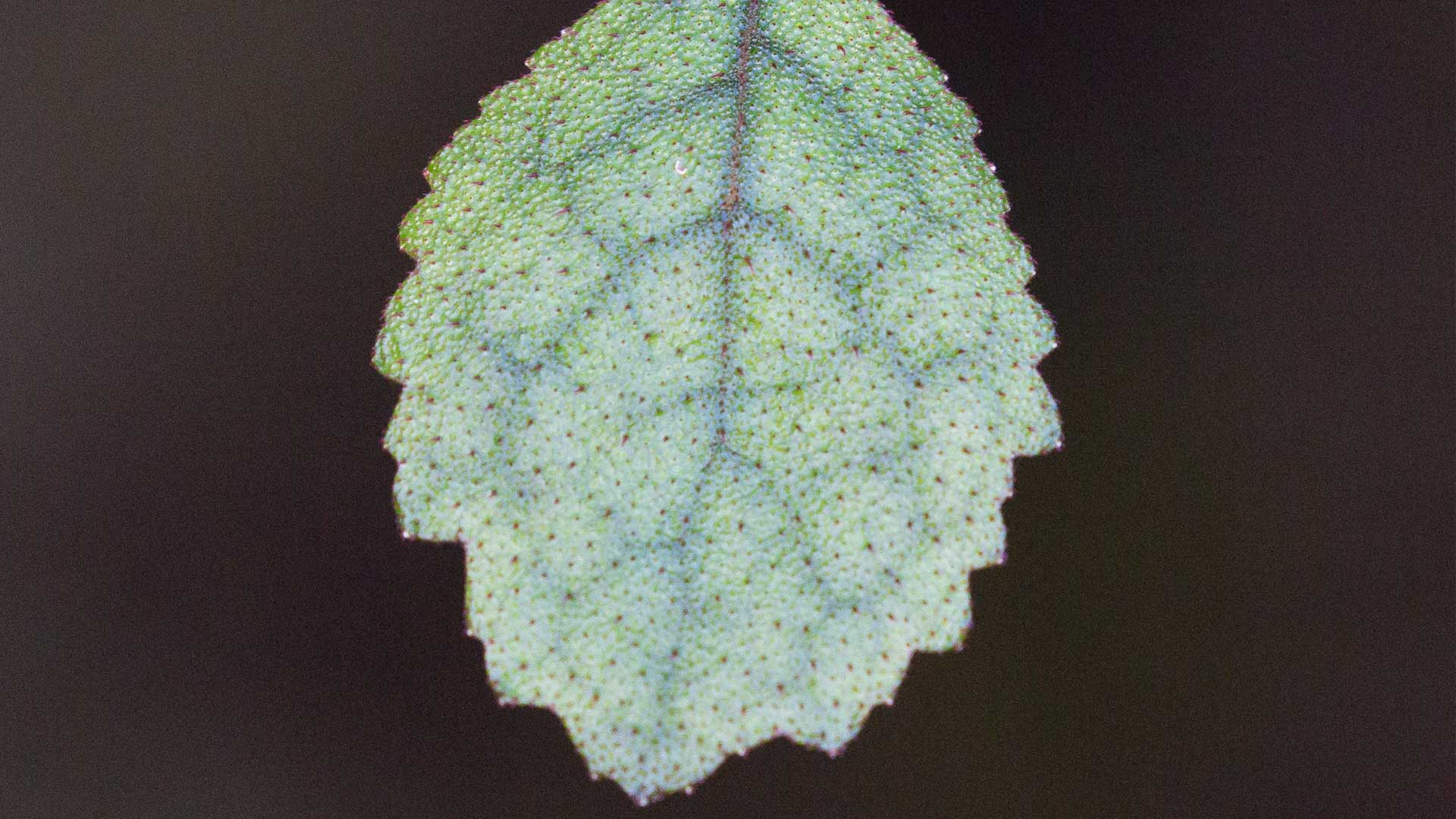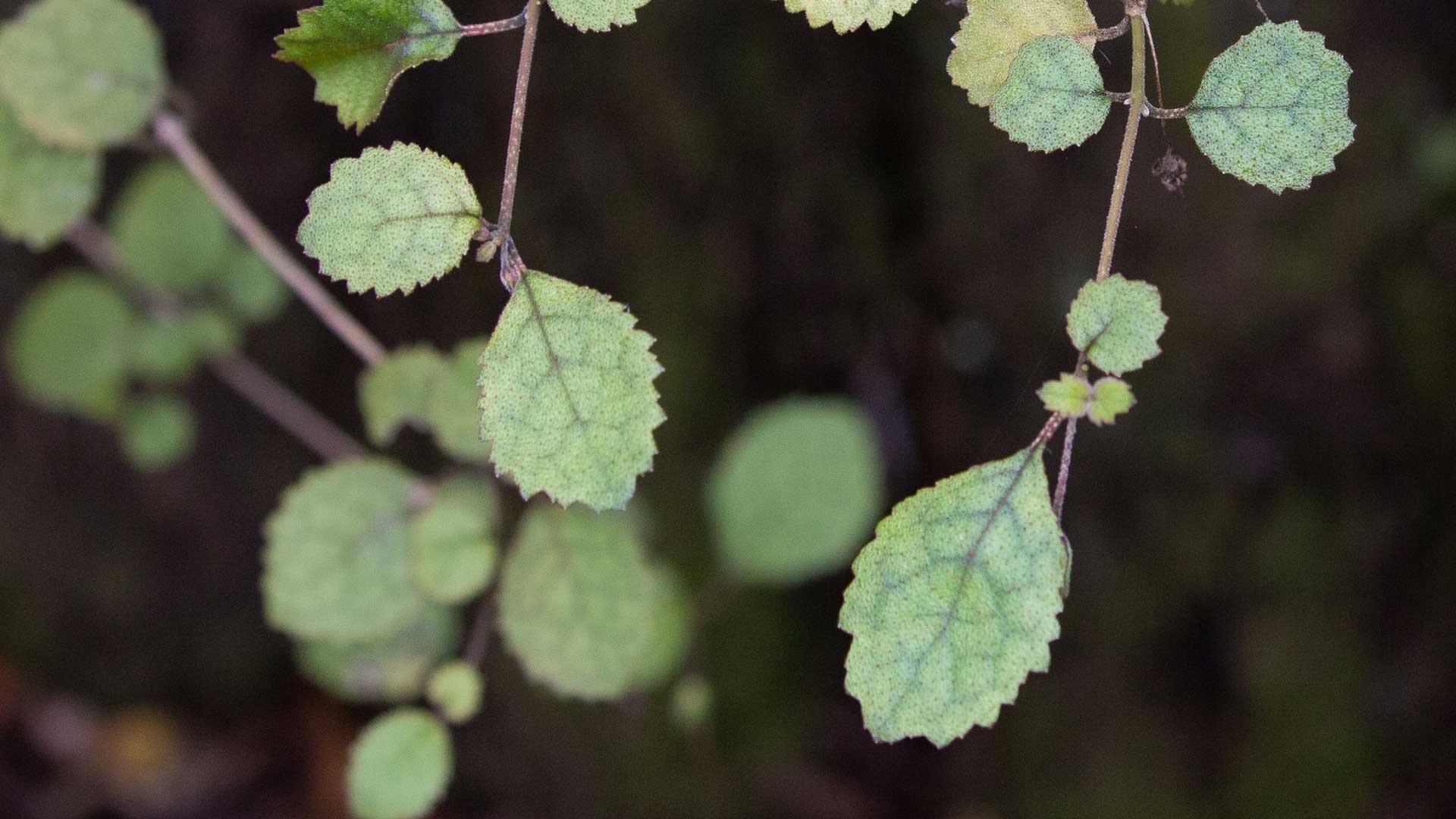It has been observed that the silvereye, a colonist bird from Australia, will instead pierce the base of the flowers to get to the nectar (as unlike our native birds, their shorter beaks can’t reach through the flower tube itself). Unfortunately by doing this, they by-pass the internal parts of the flower and don’t act as effective pollinators. During this process they may shake some pollen loose, and if fortune holds, that pollen may fall onto neighbouring flowers, or onto the bird itself and be carried away.
Taurepo is also under threat from introduced pest species that browse and eat the flowers, which demonstrates the importance of pest control not only for our wildlife, but for our plants as well.
Help a shrub out by planting taurepo in your home rockery! It may not be the easiest plant to establish but once it does, it will thrive with little attention for many years, provide colour to your garden and can often be purchased at a native specialist nursery. Any native plants you establish in your home garden will help to feed our native wildlife and in turn, many of our birds, reptiles, bugs and even bats will then keep our flora regenerating by spreading seeds throughout the forest.
You can see taurepo when you next visit us, flowering by The Lookout Café in Te Wao Nui - our sanctuary for New Zealand wildlife and plants.
Stay tuned for the next blog in this series and if you have any recommendations on plants we should cover or questions for our horticulture experts, flick us an email!


